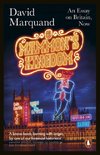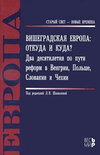
-
 Anglický jazyk
Anglický jazyk
Japanese writing system terms
Autor: Source: Wikipedia
Source: Wikipedia. Pages: 24. Chapters: Hiragana, Kanji, Katakana, Furigana, Gairaigo, Shinjitai, Emoji, Rendaku, Ateji, Yojijukugo, Ryakuji, Dakuten, Half-width kana, Yoon, Wasei-eigo, Sokuon, Kyujitai, Asahi characters. Excerpt: ·) ) are the adopted logographic... Viac o knihe
Na objednávku, dodanie 2-4 týždne
14.13 €
bežná cena: 15.70 €
O knihe
Source: Wikipedia. Pages: 24. Chapters: Hiragana, Kanji, Katakana, Furigana, Gairaigo, Shinjitai, Emoji, Rendaku, Ateji, Yojijukugo, Ryakuji, Dakuten, Half-width kana, Yoon, Wasei-eigo, Sokuon, Kyujitai, Asahi characters. Excerpt: ·) ) are the adopted logographic Chinese characters hanzi that are used in the modern Japanese writing system along with hiragana (¿¿¿¿, ¿¿¿), katakana (¿¿¿¿, ¿¿¿), Indo Arabic numerals, and the occasional use of the Latin alphabet (known as "romaji"). The Japanese term kanji (¿¿) for the Chinese characters literally means "Han characters" and is the same written term in the Chinese language to refer to the character writing system hanzi (¿¿). Chinese characters first came to Japan on articles imported from China. An early instance of such an import was a gold seal given by the Emperor Guangwu of the Han Dynasty in 57 AD. It is not clear when Japanese people started to gain a command of Classical Chinese by themselves. According to Japanese legends of Nihon Shoki and Kojiki a scholar called Wani (¿¿) was dispatched by the Kingdom of Baekje in southwestern Korea to the Japanese Islands during the reign of Emperor Ojin, bringing with him the knowledge of Confucianism and the Chinese writing system. The first actual Japanese documents were probably written by Chinese immigrants. For example, the diplomatic correspondence from King Bu of Wa to Emperor Shun of the Liu Song Dynasty in 478 has been praised for its skillful use of allusion. Later, groups of people called fuhito were organized under the monarch to read and write Classical Chinese. From the 6th century onwards, Chinese documents written in Japan tended to show linguistic interference from Japanese, suggesting the wide acceptance of Chinese characters in Japan. The Japanese language itself had no written form at the time kanji was introduced. Originally texts were written in the Chinese language and would have been read as such. Over time, however, a system known as kanbun (¿¿) emerged, which involved using Chinese text with diacritical marks to allow Japanese speakers to restructure and read Chinese sentences, by changing word order and adding particles and verb endings, in accordance with the rules of Japane
- Vydavateľstvo: Books LLC, Reference Series
- Rok vydania: 2013
- Formát: Paperback
- Rozmer: 246 x 189 mm
- Jazyk: Anglický jazyk
- ISBN: 9781234604011







 Nemecký jazyk
Nemecký jazyk 
 Ruský jazyk
Ruský jazyk 



